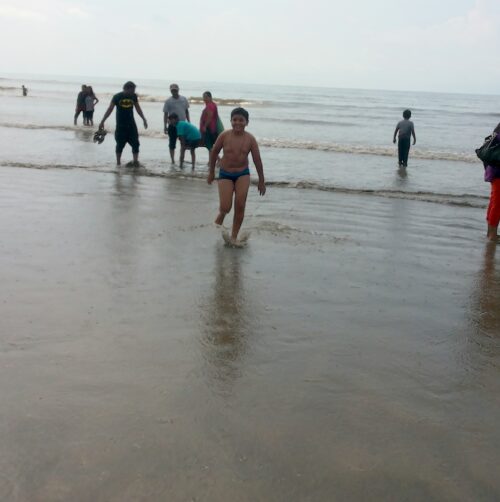A. Ovulation, Fertilization and Menstruation Cycle:
When both the ovaries are fully mature, they alternatively produce ova at the interval of 28 days. Release of ovum into the uterus through the fallopian tube is called as ovulation.
There are changes in the uterus before ovulation. First of all the internal layer of uterus, which is called as endometrium and which contains a network of blood capillaries is broken down and gradually washed out. This comes out gradually for three to four days. This condition is called as menstruation.
Ten to twelve days after menstruation ovulation takes place. The ovum takes a time period of about fourteen days to reach to the uterus.
It stays there for two days. If it meets with sperms in this period and fertilization may take place. Only one sperm can fertilize the ovum.
If sperms do not meet the ovum within this period fertilization does not occur. This is the reason why fertilization is possible only in the middle of the menstruation cycle.
The fusion of ovum and sperm is called as fertilization.
A diploid zygote is formed after fertilization. It sticks to the endometrium of the uterus. We can now call embryo to the zygote. Mutual connection of the embryo and the uterus is called as implantation.
Blood supply from the mother’s body starts into it. The supply is done through a connecting tube called as placenta. This tube is carefully cut after the infant takes birth and the infant is thus separated from the mother’s body.
The nutrition, respiration, and excretion of the embryo is done through mother’s body with the help of the placenta.
After fertilization the ovulation and menstruation remains stopped until the embryo remains inside the uterus. The repeated mitosis in zygote leads it to become embryo. It comes out of the uterus as an infant after developing through a period of nine months. The total pregnancy period of the human being is about 40 weeks and the weight of the infant remains about 3.5 kg.
The period between fertilization and birth is called as gestation period. When a fully developed infant comes out of the uterus, the process is called as Parturition.
If fertilization does not take place inside the uterus by some reason the ovum starts degenerating. When 28 days are completed it gets degenerated completely and starts coming out along with degenerated endometrium through genital opening. Thus the period of 28 days between one menstruation and the other menstruation is called as menstruation cycle.
B. Puberty and Menopause
With the start of the secretion of male and female hormones in human beings, their sex organs become active and the secondary sexual characters start appearing. This stage is called as Puberty. In Boys puberty starts in the age of 13 to 14 and in girls it starts in the age of 10 to 13.
Ovulation in human females usually stops in the age of 50 and menstruation cycle too stops with the same process. This is called as Menopause. On contrary in human females production of sperms and semen continues till the whole life.
C. Functions of sex hormones:
Following are the functions of sex hormones in humans-
(i) These control development od sperms in males and development of ova in females.
(ii) These promote and maintain the secondary sexual characters, their structures and functions.
(iii) These catalyze the development and maintenance of secondary sexual characters.




